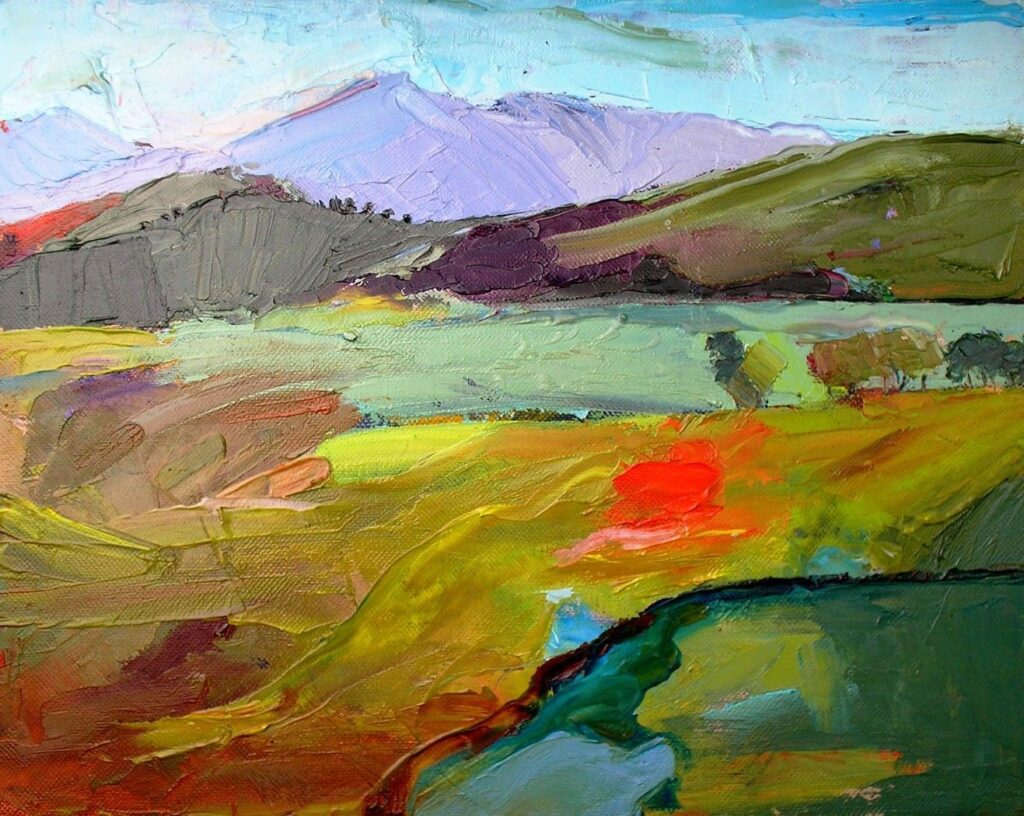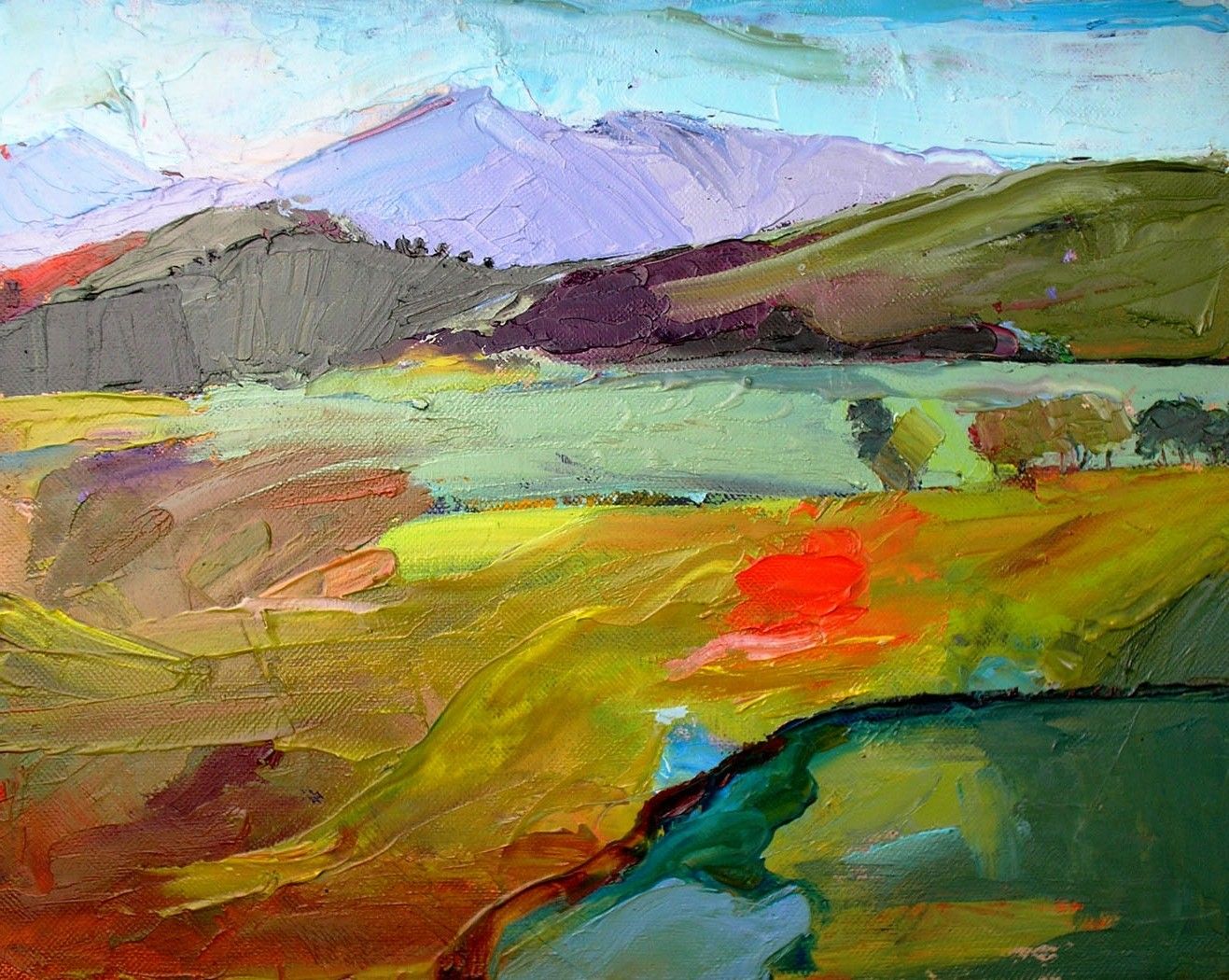
Exploring the Evolving World of Contemporary Landscape Painting
Contemporary landscape painting continues to captivate art enthusiasts and collectors alike, offering a diverse range of perspectives and interpretations of the natural world. Unlike traditional landscape art that often aimed for idealized representations, contemporary artists embrace experimentation, abstraction, and social commentary, pushing the boundaries of the genre. This article delves into the key characteristics, influential artists, and evolving trends shaping the landscape of contemporary landscape painting today.
What Defines Contemporary Landscape Painting?
While the term ‘landscape painting’ might conjure images of serene pastoral scenes, contemporary landscape painting encompasses a far broader scope. It’s defined less by its subject matter – the land – and more by its approach. Key characteristics include:
- Experimentation with Mediums: Artists are no longer limited to traditional oil paints. Acrylics, watercolors, mixed media, digital art, and even found objects are incorporated to create unique textures and effects.
- Abstraction and Non-Representational Art: While some artists still aim for realistic depictions, many embrace abstraction, focusing on color, form, and texture to evoke the essence of a landscape rather than a literal representation.
- Social and Environmental Commentary: Contemporary landscape painting often reflects concerns about environmental degradation, urbanization, and the impact of human activity on the natural world. Artists use their work to raise awareness and spark dialogue about these critical issues.
- Personal Interpretation: Artists inject their own emotions, experiences, and perspectives into their work, creating landscapes that are deeply personal and evocative.
- Deconstruction of Traditional Forms: Traditional notions of perspective, composition, and subject matter are often challenged and reinterpreted.
Influential Artists Shaping the Genre
Several artists have played a pivotal role in shaping the landscape of contemporary landscape painting. Here are a few notable examples:
Gerhard Richter
Although not exclusively a landscape painter, Richter’s abstract works often draw inspiration from natural forms and landscapes. His blurred and layered paintings evoke a sense of atmosphere and ambiguity, challenging viewers to question the nature of perception. His approach has significantly influenced subsequent generations of contemporary landscape painting artists.
April Gornik
Gornik is known for her dramatic and atmospheric landscapes, often depicting stormy skies, vast oceans, and otherworldly light. Her work blends realism with a sense of the sublime, capturing the power and beauty of the natural world. She is a key figure in the resurgence of interest in landscape painting as a serious art form.
Peter Doig
Doig’s paintings often depict dreamlike and melancholic landscapes, drawing inspiration from his own memories and experiences. His use of color and composition creates a sense of mystery and unease, inviting viewers to contemplate the relationship between memory, place, and identity. His works are highly sought after and have helped to elevate the profile of contemporary landscape painting.
Julie Mehretu
Mehretu’s large-scale abstract paintings incorporate elements of architecture, cartography, and urban planning. While not strictly landscapes, her works evoke a sense of place and movement, reflecting the complexities and dynamism of the modern world. Her innovative approach has broadened the definition of what constitutes contemporary landscape painting.
Vija Celmins
Celmins is renowned for her meticulously rendered drawings and paintings of the ocean, stars, and desert landscapes. Her work emphasizes the vastness and indifference of nature, inviting viewers to contemplate their place in the universe. Her focus on detail and precision has inspired many artists working in the field of contemporary landscape painting.
Evolving Trends in Contemporary Landscape Painting
The world of contemporary landscape painting is constantly evolving, with new trends and approaches emerging all the time. Some notable trends include:
- Emphasis on Environmental Issues: With growing awareness of climate change and environmental degradation, many artists are using their work to address these critical issues. Paintings that depict polluted landscapes, deforestation, and the effects of climate change are becoming increasingly common.
- Integration of Technology: Digital art, augmented reality, and other technologies are being incorporated into landscape paintings, creating new possibilities for artistic expression. Artists are using these tools to create interactive installations, virtual landscapes, and other innovative works.
- Exploration of the Urban Landscape: While traditional landscape painting focused on natural environments, contemporary landscape painting is increasingly exploring the urban landscape. Artists are depicting cityscapes, industrial sites, and other man-made environments, reflecting the changing relationship between humans and the land.
- Focus on Identity and Place: Many artists are using landscape painting to explore issues of identity, belonging, and cultural heritage. Paintings that depict landscapes associated with specific ethnic groups or communities are becoming increasingly common.
- Return to Realism, with a Twist: While abstraction remains popular, there’s also a renewed interest in realism, but with a contemporary sensibility. Artists are creating highly detailed and realistic landscapes that are infused with personal emotion and social commentary.
Collecting Contemporary Landscape Painting
For those interested in collecting contemporary landscape painting, there are several avenues to explore:
- Art Galleries: Visiting art galleries is a great way to discover new artists and see their work in person. Many galleries specialize in contemporary landscape painting, offering a curated selection of artworks.
- Art Fairs: Art fairs provide an opportunity to see a wide range of artworks from different galleries and artists in one place. These events are a great way to discover new trends and connect with other collectors.
- Online Marketplaces: Online marketplaces such as Artsy and Saatchi Art offer a vast selection of contemporary landscape painting from artists around the world. These platforms make it easy to browse and purchase artworks from the comfort of your own home.
- Artist Studios: Visiting artist studios can provide a unique opportunity to see the creative process firsthand and purchase artworks directly from the artist.
- Auctions: Art auctions can be a good place to find high-quality contemporary landscape painting, but it’s important to do your research and understand the market value of the artworks you’re interested in.
The Enduring Appeal of Landscape Painting
Despite the rise of new art forms and technologies, contemporary landscape painting continues to hold a significant place in the art world. Its enduring appeal lies in its ability to connect us to the natural world, evoke powerful emotions, and spark dialogue about important social and environmental issues. Whether you’re an artist, a collector, or simply an art enthusiast, exploring the world of contemporary landscape painting is a rewarding and enriching experience.
The genre offers a platform for artists to express their unique perspectives on the world around us, and for viewers to engage with these perspectives in meaningful ways. [See also: The History of Landscape Art] By embracing experimentation, innovation, and social commentary, contemporary landscape painting is constantly evolving and pushing the boundaries of what art can be.
From abstract interpretations to hyper-realistic depictions, the diversity of styles and approaches within contemporary landscape painting ensures that there is something for everyone to appreciate. As we continue to grapple with the challenges of climate change, urbanization, and social inequality, the role of contemporary landscape painting in raising awareness and inspiring action will only become more important. It serves as a visual reminder of the beauty and fragility of the natural world, and a call to protect it for future generations.
Ultimately, contemporary landscape painting is more than just a representation of the land; it is a reflection of our relationship with it, and a testament to the power of art to inspire, provoke, and transform.

